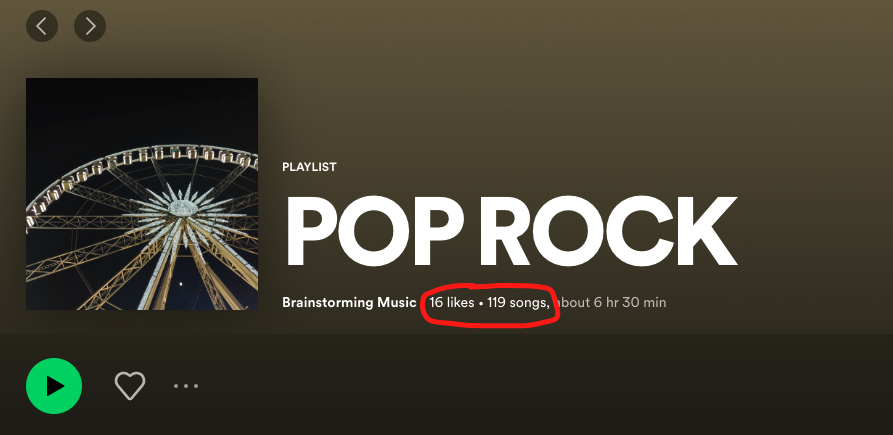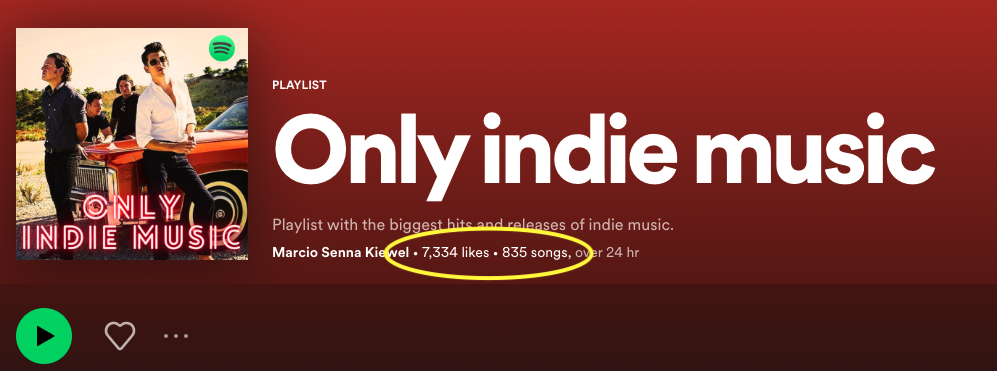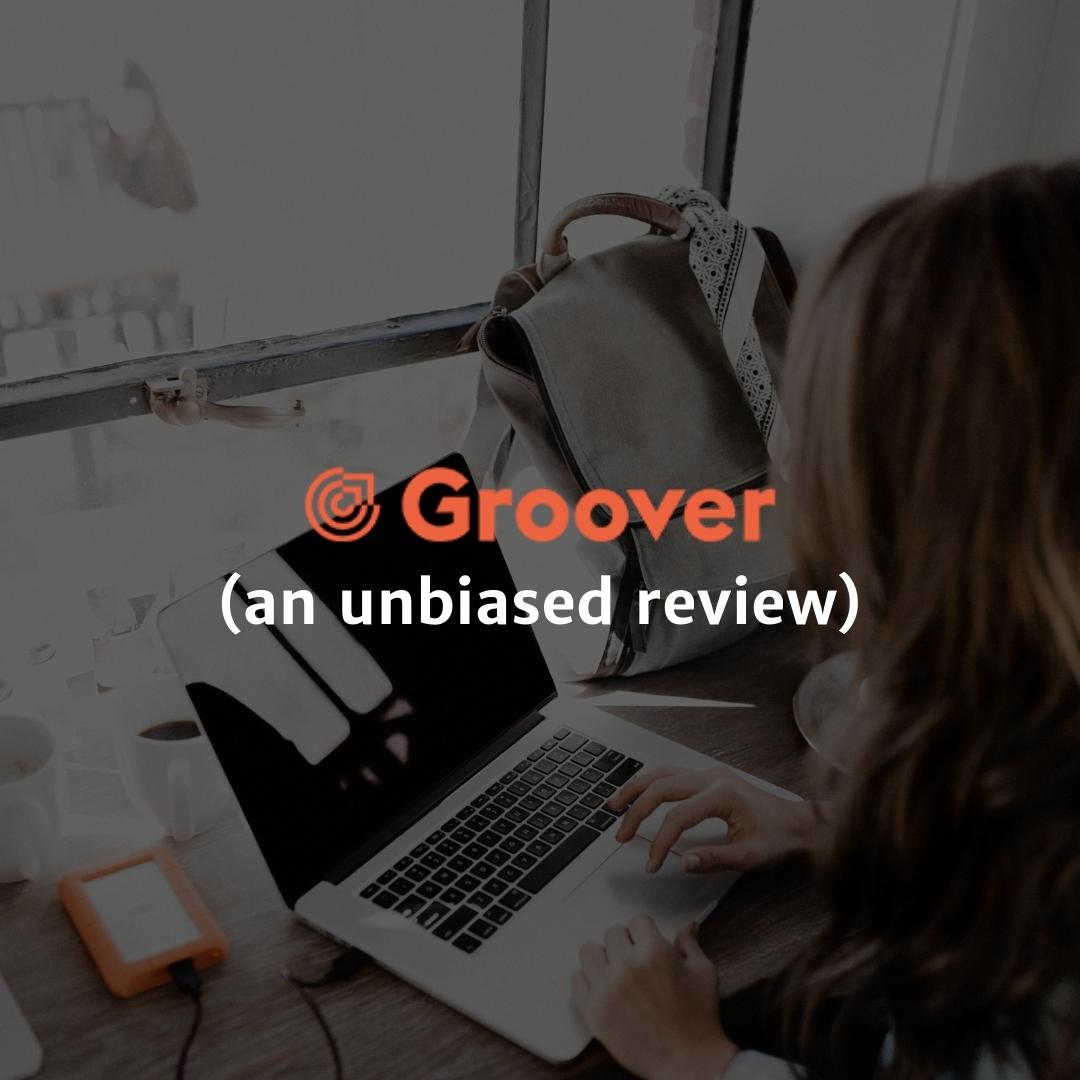Is it worth using Groover to promote your music?
My short answer: I think it definitely can be. If you want to try it, you can click here and start grooving.
(Sorry. I’ll try to keep the lame puns to a minimum.)
Oh, and you can use the code TWOSTORYMELODYVIP to get a 10% discount.
Want more info before you try it? That’s totally understandable. I’ll get into the details of everything below, but here’s the quick summary: I formed the basis of my opinion by submitting a song to about ~40 curators on the platform. The results…
- 14 playlist adds
- 3 blog posts (one was a round-up-style piece)
That’s an approval rate of roughly 40% (a few of the curators shared the song in both a post and a playlist), which is honestly really good. All told, for what the campaign would’ve cost (~$75) and for the time I put into it (about an hour), that collection of coverage is pretty solid, and the actual experience of running the campaign was pretty solid, too.
So, overall, using Groover was a good experience.
It wasn’t a perfect experience (there are a few drawbacks to the platform that I’ll break down below), and I don’t think Groover is necessarily the right promotion decision for every artist.
But more on that later. For now, let’s start at the beginning…
What is Groover?
My answer: Groover is a well-named music submission platform that helps artists get their music heard and shared by curators.
The quick-pitch from Dorian Perron (who’s the co-founder of the company): “Groover helps artists get their music heard. Through an innovative web platform, Groover connects artists who want to promote their music with the best curators, radios and labels seeking emerging talents. On www.groover.co, artists can send their music directly to a selection of blogs, radios, playlist curators, record labels and pros of their choice, get feedback guaranteed, and coverage!”
👆 That’s a little more jargon-y, but it’s also not a bad synopsis.
Here’s how it works in practice: You pay for Grooviz, which are credits that allow you to submit music to curators (meaning the blogs, radios, playlist curators, etc.) on the platform. Curators cost about two credits to contact (a few “Top Curators” cost more), and when you pitch a curator a song, you’re guaranteed to get feedback. Curators are paid for their responses to submissions, so the whole process isn’t payola.
This is a model that was pioneered by SubmitHub in 2015 and has since proliferated the PR industry. While there’s been a fair amount of hand-wringing over it, the truth is that it works for curators and for artists. I’ve been on both sides of this… I’ve been bombarded by email submissions to my music blog, and I’ve sent enough emails into the black holes of editors’ email boxes to know that submission platforms like these really do help.
Groover is another example of that relatively new reality.
How I heard about Groover
I’ve known about Groover for a while – along with SubmitHub and Playlist Push, it’s one of the more prominent players in the music submission space – but I hadn’t seriously considered using the platform until I was contacted by Dorian. Here’s how things went down:
- Dorian reached out and asked me if I’d be interested in trying the platform and writing a review of my experience.
- I said yes.
And here we are. Crazy how life works, right?
In exchange for the review, I got 100 free Grooviz (which, as of this writing, comes out to about $90 if you purchase them in bulk) to use for a campaign.
A few things to note:
1) The free credits didn’t impact how curators engaged with my submission – discount code or not, all credits are the same on the curator side.
2) While there’s obviously some incentive for me to write a positive review (at the very least because I don’t want to be mean to Dorian ha), I’m doing my best to remain unbiased, which I hope you’ll recognize if you scroll down to the “cons” section.
3) I think I have a pretty fair perspective on music submission platforms and music on PR in general; I run a PR agency called Two Story Media where I’ve helped hundreds of artists get covered, I’ve spent thousands of dollars running campaigns on plenty of submission platforms, and I’ve written in-depth reviews on SubmitHub and Musosoup. Basically, I have a thorough understanding of what works and what it’s reasonable to expect.
Okay – so let’s get into the details of what you can expect if you use Groover.
What it’s like to submit a song on Groover
The first thing you can expect is a smooth little interface that’ll help you get set up on the platform. You’ll be prompted through a few screens that’ll build out your profile – name, role, artist genre, all of that stuff. It’s kinda fun.
(Note: Dorian told me that it’s best to select two or three subgenres for yourself if you want to see the best range of recommended curators.)
Once you’ve done that, you’re ready to submit a song. I ran a campaign for Mama Said’s “Itch”, a new-classic pop-rock song that’s kind of like 2020s Fleetwood Mac (with maybe a little more punch).
The song submission process is pretty straightforward, too. Here’s what it looks like:

(If that image is small for you, you can click to blow it up.)
As with most other submission platforms, you have to have your song live on Spotify or Soundcloud to get going. Actually, it’s best to have it on both; Groover likes to have one as a backup so that the streaming experience is smooth for curators.
Once you’ve input your track’s info, you’ll move to determining your campaign objective:

There are three options here, but, let’s be honest – I think 90% of people who use Groover are probably not looking to “Receive Detailed Advice.” I opted to “Get Visibility and Media Coverage”, because I wanted blog articles and playlist placements.
That brought me to the curator selection screen:

From what I could tell, these recommendations were generated based on my genre selections, but I actually didn’t find them to be that helpful. I used this list as a starting point, but after scrolling through and selecting everyone I thought made sense, I was still left with about half of my credits. So, I clicked a button to see additional curators, and I ended up submitting to a bunch of those, too.
Once I’d selected those curators, I had the option to add messages to my pitch. You can add a standard message (you type out something general that multiple curators will receive) or a customized message (you type something out directly to a single curator).
In my experience as a curator, the pitch doesn’t matter too much on these platforms; unless you’re receiving a message from someone you know, it’s mostly about the music. So, I went with mostly standardized messaging, then sent the campaign through.

The whole process took a little less than an hour – so, about 9,000 hours shorter than a traditional PR campaign. (I’m only kind of kidding.) And curators have a week from the time of submission to respond.
In other words: Once you submit, you sit back and wait.
A breakdown of my Groover results
So, what happened to my submission? I gave you the short version of my results at the top of this article:
- 14 playlist adds
- 3 blog posts
But I’ll break things out in more detail here.
Out of the 39 responses I got, 24 curators rejected the submission. Unsurprisingly, most of the feedback made almost no sense, and many pieces of feedback directly conflicted with others. A couple of examples:


Lame, right? But I don’t blame Groover. That’s par for the course on music submission platforms, because a) curators go through so many submissions that it’s hard to think of new things to say, and b) most curators aren’t really music experts, anyway. If you want to use a music submission platform, you’ve got to have thick skin. The placements are what matter, anyway.

And we got a decent number of placements, although out of the 14 playlists that placed the song, most were small / not incredibly impactful.
Others had decent followings, but included too many songs to generate significant streams.

But, that said, all of the playlists appeared to be healthy based on my initial Chartmetric research (meaning I didn’t see bot-built lists). And even though there wasn’t a list that blew me away, the cumulative result of 14 small-ish placements is a nice streaming boost over time.
On the blog side of things, we got the following write-ups:
- Berlin on Air
- Tinnitist
- And a promised review from Keep Walking Music.
As I mentioned at the top of the piece, my opinion is that, cumulatively, this is a very respectable haul of coverage.
I’ve run a ton of PR campaigns. Getting three reviews and 14 playlist placements for an hour of work and $75 is, to be honest, pretty significantly above average.
The pros of using Groover
You can draw your own conclusions from the process and results I’ve outlined above, but here’s my take on the good side of Groover:
The submission process is very streamlined.
Some platforms are straight-up poorly designed. Other platforms (well, mainly SubmitHub) are clearly intentionally built, but include so much detail and data that it can be a bit of a slog to shift through everything. Groover, in my opinion, walks a nice balance. It offers enough detail to make you feel like you’re in control of the submission process, but it doesn’t drown you in data to the point of overwhelm.
Two good things about that: One, the interface just looks pretty, and two, it’s easy to work through.
My campaign was easy to set up. I easily found (fairly) relevant curators. And I always knew exactly what was going on, thanks to Groover’s simple email updates.
Long-story-short, Groover will absolutely cut down on the time spent doing PR when compared against traditional, email-based campaigns (although, for what it’s worth, I still recommend doing those, too).
There are good curators on the platform.
Dorian told me that there are more than 1,500 active curators on the platform, which is an impressive number. Now, some of those curators are labels or random industry people that, honestly, I wouldn’t care to submit to – but there are still plenty of solid press outlets and playlisters available to submit to, as well.
The exact number of curators that are relevant to you will depend on your genre and location. But the overall network is big enough to make Groover worthwhile for nearly any artist.
The results are respectable.
The main benefit of Groover, based on my experience, is that you can get good results by using it. Again, Groover’s model (where you pay per submission) has taken a lot of heat over the past seven years, but during that time it’s only increased in popularity. That’s because it works.
I particularly like that Groover doesn’t pay curators extra for coverage; whether a curator approves or rejects a song, they get a single Grooviz all the same. SubmitHub, for comparison’s sake, chips in extra to curators when they approve a track. While it’s a nominal amount, I still think that paying for an approval can sometimes incentivize lower-quality coverage.
When you’re covered using Groover, you can be confident that the coverage is completely earned; curators liked your music, not your money. That tends to lead to higher quality publicity.
The cons of using Groover
That said, I do think Groover has a few drawbacks.
The submission process isn’t quite as customizable as SubmitHub.
I’m listing this as a con, but, really, this is just the flipside of the fact that the process is so streamlined – sometimes, it ends up being slightly less controllable. The filtering system, for instance, is decent (although it’s a little hard to find), but there are some fields that aren’t particularly robust. While you can filter by outlets with higher approval rates, you can’t, for example, set a specific range for approval rates.
Two factors that might be more impactful:
- As far as I could see, you can’t set the genre of a specific song; you can only set genre at the artist level. This might be a problem if you’re experimenting in a range of styles.
- As far as I could see, you can’t reply directly to curator feedback. I didn’t care about this, because I think it’s rarely worth it to respond – but the lack of a chat might minimize the chances of developing relationships with curators on the platform. Groover does allow curators to offer their email addresses, though, and from what I saw, most of the people who accept your music will do this, so you will have an opportunity to connect with them in the future.
To be honest, I don’t think any of this is a huge deal, and overall, I think I actually prefer Groover’s submission process to SubmitHub’s incredibly customizable / kind of overwhelming interface.
But if you’re the kind of person who wants full control over absolutely everything, you might find Groover a tiny bit limiting.
Depending on currency conversion rates, Groover is a little bit more expensive.
This one might be a slightly bigger deal… but it’s still not that big a deal.
Out of the mainstream music submission platforms, Groover tends to be one of the more expensive. Musosoup, for example, has a flat ~$30 fee to submit a song (although you will probably end up paying for coverage later). And SubmitHub offers submissions for as low as $1 (although the majority of curators on the platform cost $2 to submit to). Groover, for its part, charges €1 per Grooviz, which comes out to about $2.10 per submission.
So, bulk deals and discounts aside, over 50 submissions, you’d end up spending ~$30 on Musosoup (with more fees coming later), ~$105 on Groover, and $100 on SubmitHub.
Again, it’s not that big a deal, but it’s an extra latte or something.
The curator network leans European.
Out of the three points I have in this section, this one’s probably the biggest deal: From what I saw, Groover’s curator network is strongest in Europe.
Now, I’m not sure this can properly be called a con, because it’d be a pro if you’re based in Europe. But I do think it’s the biggest consideration to make if you have a limited budget and need to choose between SubmitHub and Groover.
Groover is based in France, and it’s clear from their curator list that their locale has influenced their pool of curators. That’s not to say that there aren’t non-European outlets on the platform. But it is to say that the base is definitely in Europe.
If you’re looking to get the word out to the EU, that’s a big plus. But if you’re looking primarily for US-based coverage, it might give you pause before you push all of your Grooviz into the pot.
Final thoughts on Groover
Overall, I was really pleased with the process of using Groover.
No, we aren’t going to get a million streams from our 50-submission campaign, and the articles we got aren’t about to break us into the mainstream – but the coverage we got was definitely above-average for a PR campaign.
I always preach that music promotion is like rolling a snowball; it grows over time. If you’re expecting to go viral with your first Groover campaign for your first release, you’ll probably (definitely) be disappointed.
But if you’re looking to build steady progress with multiple solid placements, a Groover campaign can be a great tool to try.
You can click here to give the platform a shot. And here’s the discount code again: TWOSTORYMELODYVIP.
Regardless, whether you try Groover or not, here’s wishing you good luck as you create and promote music. It’s worth it.
You’ve got this.








